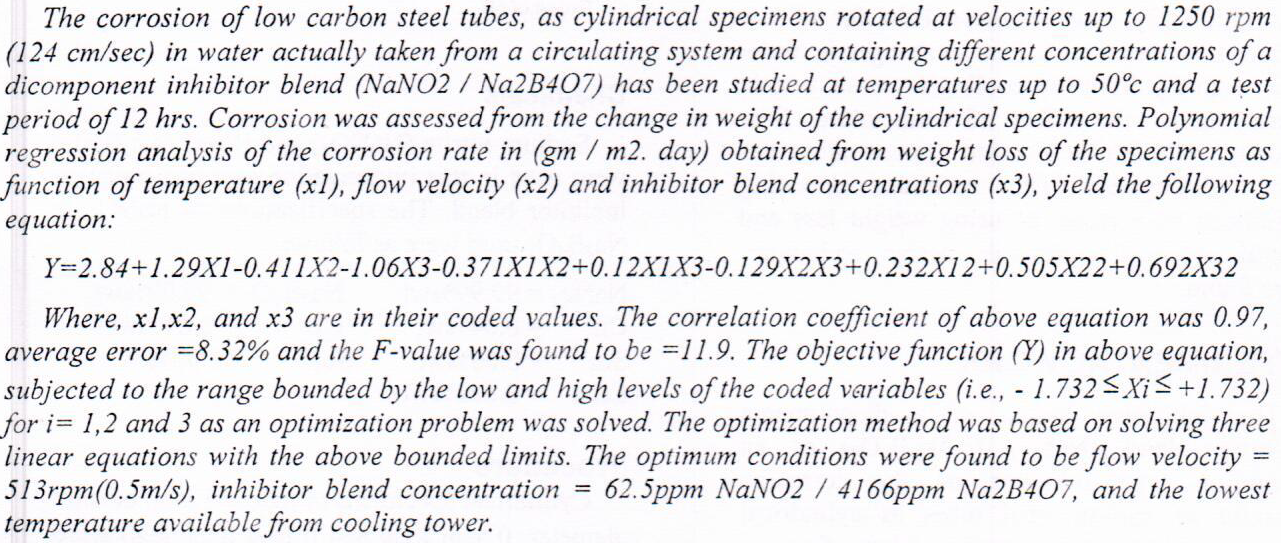
Methicillin resistant Staphylococcus aureus (MRSA) is one of the principal nosocomial causative agents. This bacterium has the capability to resist wide range of antibiotics and it is responsible for many diseases like skin, nose and wounds infection. In this study, randomly amplified polymorphic DNA (RAPD)-PCR was applied with ten random primers to examine the molecular diversity among methicillin resistant Staphylococcus aureus (MRSA) isolates in the hospitals and to investigate the genetic distance between them. 90 Isolates were collected from clinical specimens from Iraqi hospitals for a total of 90 isolates. Only 10 strains (11.11%) were found to be MRSA. From these 10 primers, only 9 gave clear amplification products. 91 fragment l
... Show More (2)
(2)
Erratum for Organic acid concentration thresholds for ageing of carbonate minerals: Implications for CO2 trapping/storage.
چکیدهی بحث
به نظر میآید که عالم هستی ، بر مسألهی « حرکت» استوار دارد ، و روح ، همیشه دنبال دگرگونی و تکامل و برتری میگردد. حرکت ، همهی چیزها در عالم إمکان را در بر میگیرد. حرکت در بنیادهای فکر مولانا جای مهمی دارد .اشعار مولانا مقدار زیادی از پویایی و حرکت برخوردارست، و از آنجایی که فعل ، عنصر تکانبخش جمله ، و کانون دلالت است ، ترجیح دادیم - علاوه بر دیگر عنا
... Show MoreThe reaction oisolated and characterized by elemental analysis (C,H,N) , 1H-NMR, mass spectra and Fourier transform (Ft-IR). The reaction of the (L-AZD) with: [VO(II), Cr(III), Mn(II), Co(II), Ni(II), Cu(II), Zn(II), Cd(II) and Hg(II)], has been investigated and was isolated as tri nuclear cluster and characterized by: Ft-IR, U. v- Visible, electrical conductivity, magnetic susceptibilities at 25 Co, atomic absorption and molar ratio. Spectroscopic evidence showed that the binding of metal ions were through azide and carbonyl moieties resulting in a six- coordinating metal ions in [Cr (III), Mn (II), Co (II) and Ni (II)]. The Vo (II), Cu (II), Zn (II), Cd (II) and Hg (II) were coordinated through azide group only forming square pyramidal
... Show More